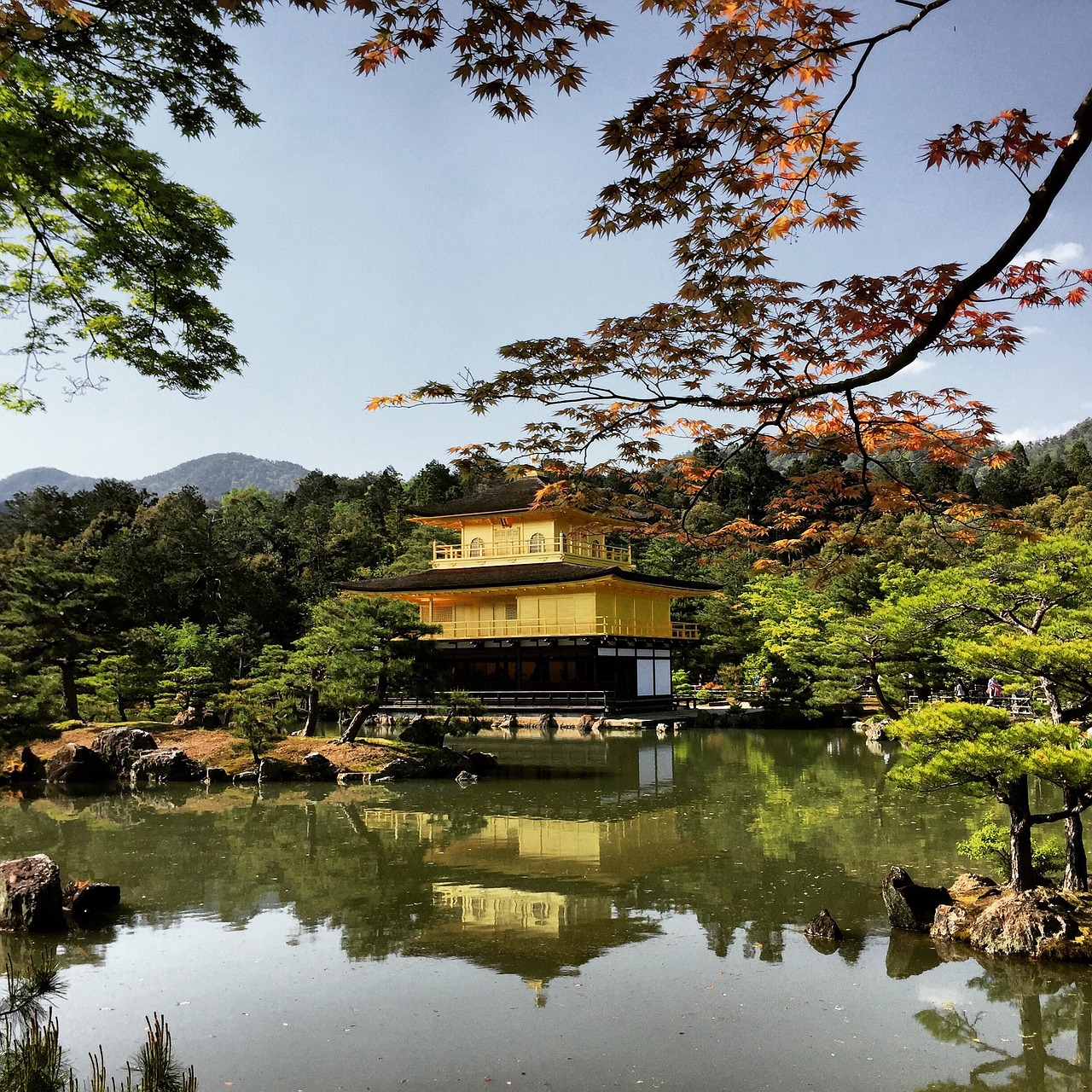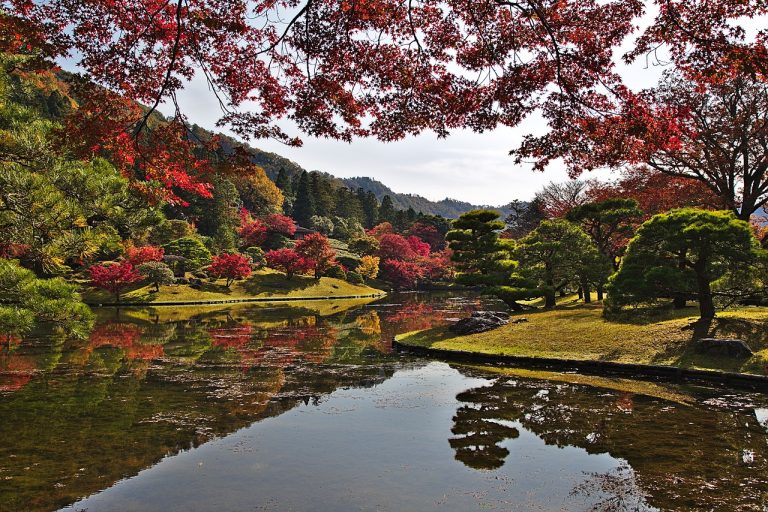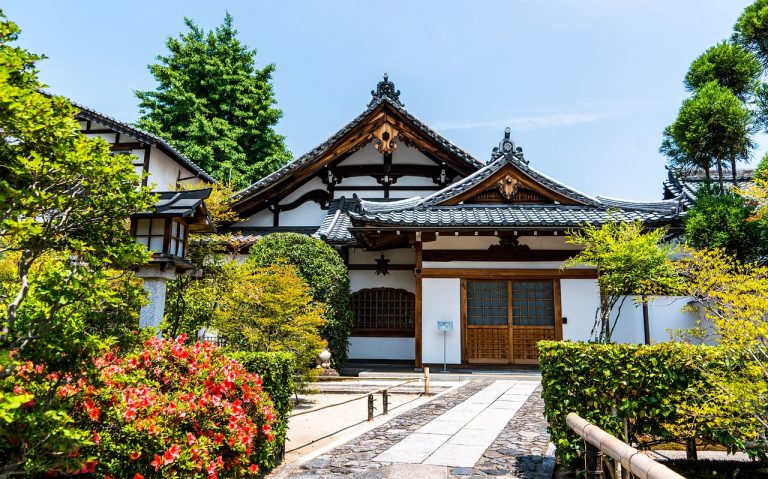Kyoto Japan Video
Artisanal Crafts and Markets of Kyoto Japan
Kyoto, Japan, known for its rich cultural heritage and traditional craftsmanship, is a haven for artisanal crafts and markets. This ancient city is home to countless skilled artisans who have honed their craft for generations. From pottery and textiles to lacquerware and woodworking, Kyoto offers a wide array of artisanal products that showcase the beauty and craftsmanship of Japanese culture.
Let’s explore the artisanal crafts and markets of Kyoto, where you can immerse yourself in the world of traditional Japanese craftsmanship.
Kyoto’s Pottery Scene
- Kiyomizu-yaki: Kiyomizu-yaki is a type of pottery that originated in Kyoto and is known for its delicate colors and intricate designs. This style of pottery often features hand-painted motifs of cherry blossoms, bamboo, and other natural elements.
- Raku ware: Raku ware is a unique type of pottery known for its rustic and imperfect aesthetic. It was developed in the 16th century by the Raku family and is highly regarded for its tea ceremony bowls.
- Kyo-yaki: Kyo-yaki refers to the pottery produced in Kyoto and is characterized by its intricate hand-painted designs and vibrant colors. This style often incorporates traditional motifs such as dragons, phoenixes, and cherry blossoms.
Kyoto Japan Image 1: 
Visiting the pottery markets in Kyoto, such as the Kiyomizu Pottery Market and the Gojozaka Pottery District, allows you to witness the craftsmanship firsthand and even try your hand at creating your own pottery.
Kyoto’s Textile Traditions
- Kyoto Yuzen: Kyoto Yuzen is a traditional dyeing technique used to create intricate patterns on silk fabrics. The designs often feature vibrant colors, intricate motifs, and gold leaf accents. This technique is commonly used to create kimono fabrics and is considered a national treasure of Japan.
- Nishijin-ori: Nishijin-ori is a traditional weaving technique that produces luxurious and intricate textiles. This style of weaving is often used to create obi belts for kimono, as well as other decorative fabrics.
Exploring the Nishijin Textile Center and the various textile markets in Kyoto allows you to witness the intricate process of textile production and admire the beautiful fabrics on display.
Kyoto Japan Image 2: 
Kyoto’s Lacquerware and Woodworking
- Kyoto Lacquerware: Kyoto is renowned for its exquisite lacquerware, which involves coating wooden objects with layers of lacquer and decorating them with intricate designs. The lacquerware of Kyoto is known for its durability, elegance, and attention to detail.
- Kyo-sashimono: Kyo-sashimono refers to the traditional woodworking techniques used in Kyoto. Skilled artisans create intricate furniture, tea ceremony utensils, and architectural elements using these techniques.
Visiting the Kyoto Handicraft Center and the various lacquerware and woodworking studios in Kyoto provides an opportunity to witness the meticulous craftsmanship and learn about the history and techniques behind these traditional arts.
Kyoto’s Traditional Crafts Markets
- Tenjin-san Flea Market: Held on the 25th of each month at Kitano Tenmangu Shrine, this flea market offers a wide range of antiques, traditional crafts, and local food. It’s a great place to find unique treasures and experience the lively atmosphere of a traditional Japanese market.
- Chion-ji Temple Flea Market: Held on the 15th of each month, this flea market features a variety of goods, including vintage clothing, ceramics, and traditional crafts. It’s a popular spot for locals and tourists alike to browse and discover hidden gems.
Kyoto Japan Image 3: 
Kyoto’s Traditional Paper Crafts
- Washi: Washi is traditional Japanese paper made from the fibers of the mulberry tree. Kyoto is known for its high-quality washi, which is used for calligraphy, origami, and various other paper crafts.
- Kyoyuzen Washi: Kyoyuzen Washi is a type of washi paper that is hand-painted with vibrant colors and intricate patterns. It is often used for decorative purposes, such as making paper fans and lanterns.
Exploring the Kamisoe Paper Shop and the various paper craft stores in Kyoto allows you to appreciate the artistry and versatility of traditional Japanese paper.
Kyoto’s Metalwork and Swordsmithing
- Kyoto Metalwork: Kyoto is known for its metalwork, particularly in the production of Buddhist altar fittings and traditional tea ceremony utensils. Skilled artisans use techniques such as hammering, engraving, and inlaying to create intricate and beautiful metal objects.
- Kyoto Swordsmithing: Kyoto has a long history of swordsmithing, and the city is home to several renowned swordsmiths. The traditional techniques and attention to detail employed in Kyoto’s sword making have been passed down through generations.
Visiting the Kyoto Sword Museum and the various metalwork studios in Kyoto provides a fascinating insight into the artistry and craftsmanship behind these traditional metalworking practices.
Kyoto’s Bamboo Crafts
- Kyoto Bamboo Crafts: Kyoto is famous for its bamboo crafts, including baskets, tea utensils, and decorative items. Skilled artisans use traditional techniques to transform bamboo into intricate and functional objects.
- Arashiyama Bamboo Grove: Located on the outskirts of Kyoto, the Arashiyama Bamboo Grove is a must-visit destination to experience the beauty and tranquility of bamboo forests. Walking through the towering bamboo stalks is a truly enchanting experience.
Exploring the Tenryu-ji Temple and the various bamboo craft shops in Kyoto allows you to appreciate the artistry and natural beauty of bamboo.
Kyoto’s Culinary Delights
- Kyoto Cuisine: Kyoto is renowned for its traditional cuisine, which reflects the city’s rich cultural heritage. From kaiseki (multi-course) meals to matcha tea and wagashi (traditional sweets), Kyoto offers a wide range of culinary delights.
- Nishiki Market: Known as “Kyoto’s Kitchen,” Nishiki Market is a bustling food market that offers an array of fresh seafood, local produce, and traditional snacks. Exploring the market allows you to taste the flavors of Kyoto and discover unique ingredients.
Indulging in Kyoto’s culinary delights is an essential part of experiencing the city’s cultural heritage and traditions.
Conclusion
Kyoto’s artisanal crafts and markets are a testament to the city’s rich cultural heritage and the dedication of its skilled artisans. Exploring the pottery, textiles, lacquerware, woodworking, paper crafts, metalwork, bamboo crafts, and culinary delights of Kyoto provides a unique opportunity to immerse yourself in the traditions and craftsmanship of Japanese culture.
References
- Petit Palace: petitpalace.co.uk
- Kyoto Handicraft Center: kyotohandicraftcenter.com
- Nishijin Textile Center: nishijin.or.jp
- Kiyomizu Pottery Market: kiyomizuyaki.or.jp
- Gojozaka Pottery District: gojozaka.jp
- Kamisoe Paper Shop: kamisoe.com
- Kyoto Sword Museum: swordmuseum.jp
- Tenryu-ji Temple: tenryuji.com
- Arashiyama Bamboo Grove: kyoto.travel
- Nishiki Market: kyoto-nishiki.or.jp






